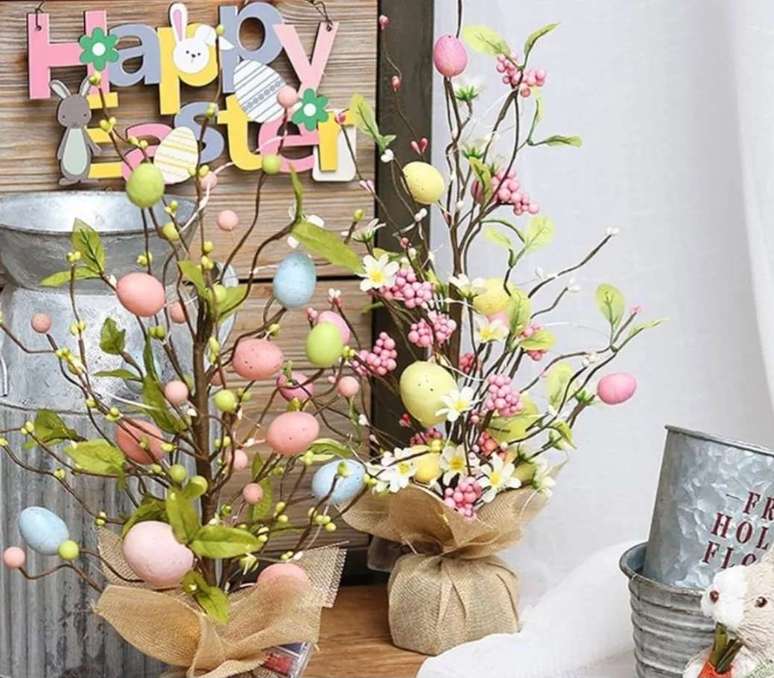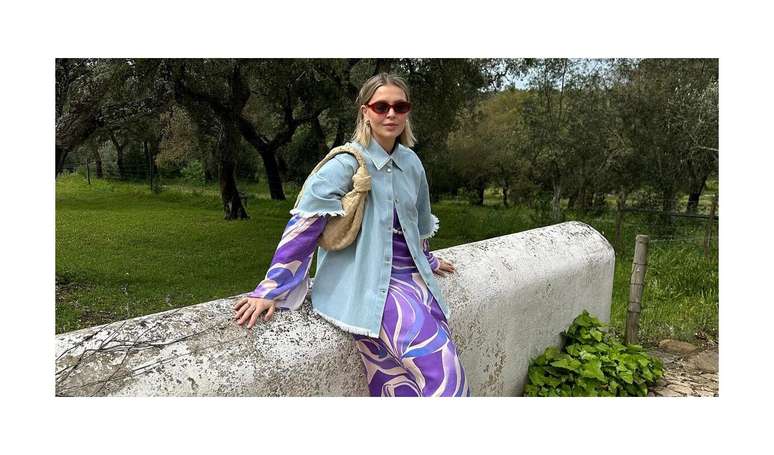-
The Easter Tree is gaining more and more space in Brazil. Inspired by the Christmas tree, but with the symbols of Holy Week, it decorates the rooms and strengthens the spirit of Easter time.
Photo: Instagram/Flip
-
The dry branches represent mourning for the death of Christ. They are decorated with natural eggshells, colored to represent the joy of resurrection.
Photo: RPC / Flipar TV playback
-
Trees can be small to decorate homes or large to decorate public spaces.
Photo: RPC / Flipar TV playback
-
In Pomerode, a city of Santa Catarina colonized by German immigrants, Easter trees are already a tradition.
Photo: Andrevruas/Wikimédia Commons/Flipar
-
The Osterbaum – which means Easter tree in German – is gigantic and set up on the street, in a crowded place, attracts visitors.
Photo: RPC / Flipar TV playback
-
This tree has 85 thousand cones. The atmosphere that reigns in the city during Holy Week is equivalent to that of Christmas in other cities that focus on the date of the celebrations. Thus, Easter becomes one of the main tourist attractions of Pomerode.
Photo: RPC / Flipar TV playback
-
In Pomerode it is common to find Easter trees decorating not only the interiors of houses, but also courtyards.
Photo: RPC / Flipar TV playback
-
Some eggs are naturally colored. With the onion peel it turns orange. With red onion the egg turns brown. Saffron and annatto color the egg yellow. Eierkraut, a weed with a bulb under the leaves, leaves the purple egg. And there is also hand painting of eggs.
Photo: Hans from Pixabay / Flipar
-
Many people make special designs on eggs to decorate the interior or exterior of their homes with delicate and festive patterns.
Photo: RPC / Flipar TV playback
-
The giant eggs are also painted in bright colors and harmonious designs, a special touch for the decoration of streets and squares.
Photo: RPC / Flipar TV playback
-
Another custom in Pomerode in this period is the Stiba, a serenade whose musicians are welcomed by families with cake and coffee. Generally the serenade is performed to the sound of an accordion or a bandoneon.
Photo: Disclosure / Flip
-
Easter trees are spreading and there are already several models on sale on websites. On Amazon, for example, this tree with colored eggs costs R$246.
Photo: Amazon Disclosure/Flipar
-
This model, which looks brilliant with LED lighting, costs R$135.
Photo: Amazon Disclosure/Flipar
-
In Christianity, according to the New Testament, Easter is celebrated on the Sunday of Jesus’ resurrection. It is the main celebration of the Christian liturgical year and the oldest Christian holiday.
Photo: public domain/Flip
-
Easter Sunday is the end of Holy Week, which begins on Thursday (Washing of the feet and Last Supper); passes through Good Friday (crucifixion); and for Hallelujah Saturday. Before this there is Lent (40 days of fasting, prayers and penance).
Photo: Image by janeb13 from Pixabay / Flipar
-
The term “Easter” derives from the Latin Pascha and the biblical Greek Πάσχα Paskha, from the Hebrew פֶּסַח (Pesaḥ or Pesach), the Jewish Passover, with the meaning of “passage”.
Photo: RPC / Flipar TV playback
-
The date of Easter was established by the Church during the Council of Nicaea, in 325 AD, therefore it falls on the first full moon after the equinox which marks the beginning of spring in the northern hemisphere.
Photo: lukasbieri pixabay / Flip
-
The inclusion of the rabbit in Easter, according to a BBC report, may have been as follows: a rabbit would have been trapped in Jesus’ open tomb and, therefore, would have witnessed the resurrection, becoming a symbol of good news.
Photo: Image by Helga Kattinger from Pixabay / Flipar
-
It is also said that rabbits and eggs – pagan elements – were seen in ancient times as symbols of fertility. Therefore, as these people became Christianized, these elements were included in the Christian holiday.
Photo: Image by Gerd Altmann from Pixabay / Flipar
-
The egg tradition dates back to the 12th century in France. Upon his return from the Second Crusade, during Lent, Louis VII was festively received with products from the lands he explored, including eggs.
Photo: Susanne from Pixabay / Flipar
-
In the 13th century, French pastry chefs prepared chocolate eggs filled with bonbons, and this custom became consolidated during the Easter period. And over time it became more modern, with increasingly sophisticated chocolates.
Photo: Flipar
Share
Source: Terra
Ben Stock is a lifestyle journalist and author at Gossipify. He writes about topics such as health, wellness, travel, food and home decor. He provides practical advice and inspiration to improve well-being, keeps readers up to date with latest lifestyle news and trends, known for his engaging writing style, in-depth analysis and unique perspectives.








